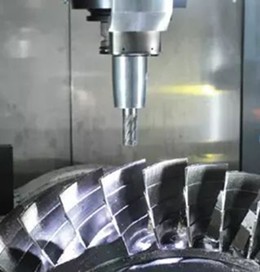How to solve the problem of superalloys machining?
What are superalloys?
Superalloys refers to a kind of metal material based on iron, nickel and cobalt, which can work for a long time under high temperature above 600℃ and certain stress. With high temperature strength, good oxidation and corrosion resistance, good fatigue performance, fracture toughness and other comprehensive properties. Superalloys is an important material widely used in aviation, aerospace, petroleum, chemical industry and ship.

superalloys machining
Why are superalloys hard to process?
1.High strength at room temperature and high temperature, high cutting force
2.Work hardening tendency, difficult to cutting
3.Low thermal conductivity, high cutting temperature during machining
4.Wear out
5.The workpiece is easy to produce thermal deformation, and the machining surface quality and precision are not easy to be guaranteed
What should we do when grinding superalloys?
1.Grinding wheel speed. The grinding wheel speed of superalloy grinding should generally be about 20m/s. The speed of the cubic borax wheel is (30~35)m/s.
2.Workpiece speed. The workpiece speed has a great influence on the grinding burn. For the superalloys with high toughness and low thermal conductivity, the workpiece speed should be increased appropriately to reduce and overcome the burn phenomenon. When grinding the outer circle and the inner circle, the workpiece speed is about 30m/min. The table speed in surface grinding is (25 ~ 28)m/min in rough grinding and (15 ~ 25)m/min in fine grinding.
3.Feed rate. Its size has great influence on the surface roughness of grinding. The longitudinal feed is (0.05 ~ 0.5)Bmm/r during the grinding of the outer circle, and a small value is taken during the fine grinding. The longitudinal feed during internal grinding is (0.1 ~ 0.3)Bmm/r; The transverse feed during surface grinding is (0.4 ~ 0.6)Bmm/DST.
4.Grinding depth. The grinding depth of the outer circle is (0.01 ~ 0.06)mlTl, the inner circle is (0.01 ~ 0.05)mm, and the plane grinding is (0.01 ~ 0.05)mm.
5.Grinding allowance. The grinding allowance of superalloys should be smaller than that of general grinding materials to reduce the grinding workload.
Grinding wheel for superalloys
1.Abrasive
When grinding superalloys, white alundum (WA) is generally used, because the hardness of white alundum is relatively high, the abrasive particles are not blunt, and the cutting performance is good. Moreover, due to the low toughness of white alundum, the grains are easy to be broken during grinding and a new cutting edge is formed. Therefore, the edge is relatively sharp, which can reduce the grinding force and grinding heat. The better abrasive for grinding superalloys is single corundum (SA). Each particle of this abrasive is a single crystal, particle uniform, sharp edge, it has a large number of crystal surface, with many cutting edges, in the grinding process is not easy to break, cutting ability is strong, suitable for grinding high temperature alloy. The best abrasive for grinding superalloys is cubic boron nitride (CBN). The problem of grinding high temperature alloy with ordinary abrasive with cubic borax wheel can be solved. The grinding ratio of GH4169 superalloys with cubic borax nitride wheel is about 35, which is 17 ~ 35 times that of single crystal corundum and white corundum grinding wheel.
2.Granularity
When the surface roughness of grinding is generally required, the grinding wheel of size 46# is used. When the surface roughness of the workpiece is lower, grind it to Ra(0.8 ~ o. 4) m with a grinding wheel of size of 46#, then grind it with a grinding wheel of size of 60# ~ 80#. Compared with grinding outer circle, grinding inner hole, end face, thin-walled parts, should use a coarse-grained grinding wheel.
3.Hardness
The hardness of high temperature alloy grinding wheel should be lower than that of carbon steel grinding wheel so that the wheel can easily fall off to obtain self-sharpness. Generally, grinding wheel hardness is J ~ N. Medium and soft K and L are commonly used. A slightly harder wheel is used for rough grinding and a softer wheel is used for fine grinding.
4.Bond
Due to the performance and grinding characteristics of the superalloy, the grinding wheel is required to have a good strength, and can bear a large impact load in the grinding process. Generally, ceramic binder with high corrosion resistance and heat resistance should be selected.
5.Organization
Most superalloys belong to austenitic structure, and the grinding chips are easy to stick and block the working surface of grinding wheel. It is not only required that the grinding wheel should be soft, but also that the structure of the grinding wheel should be loose to accommodate the grinding chips. The organization number of 5 ~ 8 should be chosen commonly.
More Superhard can supply Cost-effective WA and SA grinding wheel, also CBN grinding wheel. Contact us to get good price.






